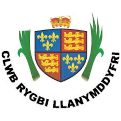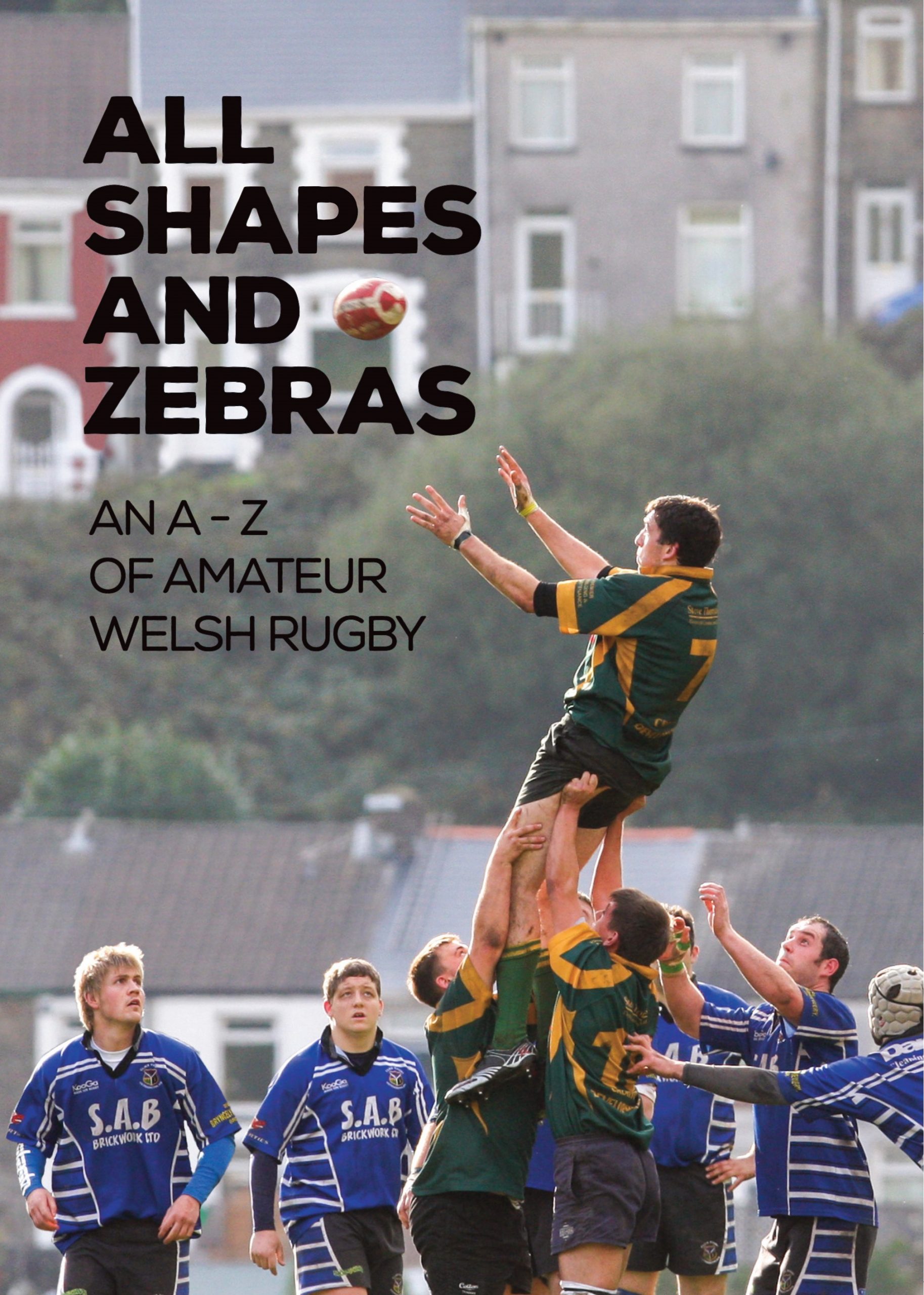Anyone in Wales looking for the perfect Christmas present to give to a follower and lover of rugby football should look no further writes Huw S Thomas.
ALL SHAPES AND ZEBRAS is a hugely entertaining and informative book written by schoolmaster and Llanfilo born Andrew Hill and lavishly illustrated by photos taken by sports photographer Ian Williams of Ystradgynlais.
It is an A-Z of amateur Welsh rugby taking the reader through 26 chapters of facts, figures, comments, reflections and stories, illustrating the wonderful idiosyncratic patchwork of rugby below the professional game.
In his foreword to the book, ex Wales scrum half Rupert Moon pays a warm tribute to Hill and Williams.
“Andrew Hill had the idea of putting his experiences of 15 years playing in the lower levels of Welsh club rugby down in print with 26 short essays of musings and thoughts not only full of nostalgia and longing for past glories but also with realism and blunt acceptance of certain uncomfortable truths.. Like all sport, amateur Welsh rugby has its “Good, Bad and Ugly” and it’s all documented here.”
He finishes his foreword “Andrew and Ian have captured that spirit,“hwyl”and atmosphere – something that, despite difficult times, will always be an integral part of our national sport.
Andrew Hill, a former Gwernyfed RFC wing and captain now teaches English at Cwmtawe School and has closely collaborated with one of Wales’s best sports photographers in Ian Williams of Riley Sports Photography who has been covering the game in Wales for some 30 years.
Hill’s sharp, perceptive, sympathetic, often humorous text, is backed up by some of Williams’s brilliant shots of moments on and off the rugby field to make this book that little bit different from rugby books that have gone before.
I was particularly drawn to the chapter H for Hard Men where Hill draws that vital distinction between brutes and hard men.
Hard men are not the wild, loose cannons who fight at the drop of a hat. Real hard men are are the men who will not stand for any nonsense on the pitch – but lead with their actions during the game rather than swinging with their fists. And hard men can be found at every rugby club throughout the land.
In a further 500 words or so Hill encapsulates the very essence of what is to be a “hard man”
Cold, focussed, unrelenting, they are the type of player that make fellow teammates thank the heavens for the fact that they are on their side.
Quoting Gerald Davies, Hill adds that such players have “a sliver of ice in their blood.”
Hill lauds their influence – a backward step will not be taken and such men are described as bloodied, unbowed, have missing teeth, cauliflower ears, cracked noses and faint scars, gnarled expressions, bodies held together by tape, keep on going game after game , the team’s totem and the rest of the team duly follow them.
And Williams with his eye for detail backs up his collaborator with a picture of two renowned hard men – “The Chief” – Dale McIntosh of Pontypridd fame and the much travelled Nathan Strong whose imposing influence at Tondu, Bridgend, Pontypridd and Aberavon remains legendary.
Whether it be in B for Boxing Day – a heady dose of excitement an delight, O for Opposition and Rivalries – brutal, ill tempered affairs, Q for Queues at the Clubhouse Bar – mischief and merrymaking with shouts of laughter ringing out, or R for Referees – they test our patience and frustrate us at times, but we wouldn’t be able to play without them, rugby men and women will be drawn into conjuring up treasured memories of their own.
And Ian Williams’s clean and crisp photos will unfailingly shake up many long forgotten nostalgic moments for each and every reader.
There are over 150 photos not just of players of all ages and sizes, captured in all guises and from a vast range of clubs but supporters, referees, coaches, committee men, grounds men, barmen, even burger vans to show the all pervading influence of the game on the Welsh character.
In his his preface to the book Hill describes the game’s never ending magnetic appeal – – the collective experiences that shine brightly and bring players together and forge bonds between team mates that last long after the shrill of then ref’s whistle falls silent and the career curtain falls. It’s an amazing game, and one that has made and shaped the men and women who have played it.
Nor is Hill afraid to sound alarm bells in Welsh rugby.
Ominously, here in Wales, in all probability, some clubs will struggle to survive now that the pandemic is over and life returns to normal. Fixture lists on Saturdays are already strewn with postponements as teams struggle to raise a side. Some may say, putting sentiment aside, that some Welsh amateur clubs need to fold, with the glut of clubs and a dwindling player pool posing difficult and uncomfortable questions, even before the pandemic. Conceivably some clubs folding may allow others to remain alive but either way, for every club that does fold, the community it once served, will be diminished as a result and it will be a crying shame.,
The book is great read, a fascinating and often humorous alphabetical and photographic trip through Welsh rugby and a must read for all lovers of the national game.
The book is launched this week at Riley Sporting Memories shop in Ystradgynlais and then at Gwernyfed RFC on December 10
The book printed by Zenith Media is priced at £14.99 and is now available in bookshops as well as Riley Sporting Memories Shop, 7 Commercial Street, Ystradgynlais, SA9 1HD

